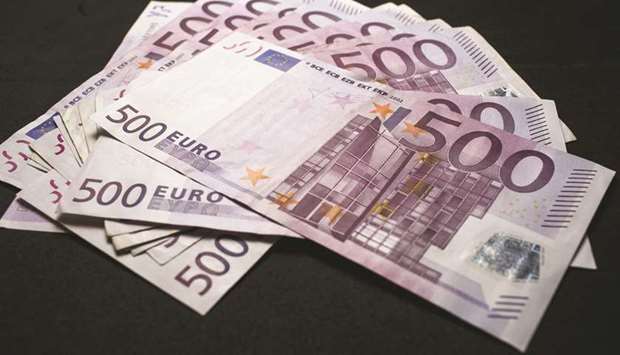The euro had its biggest fall in two years last Thursday, the Wall Street ‘fear index’ VIX is at its lowest since February’s historic one-off jump and the gap between two- and 10-year US bond yields is the narrowest since September 2007, putting the curve only 35 basis points away from inversion.
The latest Commodity Futures Trading Commission figures show that speculators and hedge funds were on the right side of these trades in the week ending June 12, moves that extended further over the course of last week.
Pivotal to these moves across major financial markets are the contrasting signals sent out by the US Federal Reserve and European Central Bank.
The Fed signalled it will raise rates four times this year instead of three as it had previously indicated, and ECB chief Mario Draghi managed to outline details of the end of quantitative easing but with such a dovish slant that the euro and bond yields got crushed.
CFTC data show that hedge funds cut their net long euro position to 88,225 contracts, the smallest net long since the end of December and almost half the record 151,476 contracts amassed less than two months ago.
The euro has fallen 7% since then, and traders are now wondering whether it will soon break below $1.15.
Draghi’s dovish guidance on Thursday prompted its biggest one-day loss, 1.9%, since the day after the Brexit referendum in June 2016.
Curiously though, CFTC speculators’ overall net short dollar position, against a range of G10 and emerging currencies, grew in the latest week to $7.10bn from $5.25bn the week before.
Shorting the dollar is not a winning trade now.
Boosted by increasingly favourable interest rate differentials, the dollar index on Friday rose to its highest level since November.
The rise in US rate expectations and short-term yields may be good for the dollar, but not so much for those expecting the yield curve to steepen.
And that’s exactly what CFTC hedge funds, generally speaking, are still betting on, despite last week’s moves.
Speculators cut their net short 10-year Treasury futures position to 335,994 contracts, the smallest short in two months.
The yield has failed to break back above 3% and the 2s/10s curve has flattened to just 35 basis points.
Yet curve steepening overwhelmingly remains the consensus trade.
The difference between CFTC specs’ 10- and 2-year positioning shrank to a net short 318,423 contracts in the latest week, but only two weeks ago it was a record 534,000.
“The CFTC data suggest that 2s/10s steepeners are now a crowded trade, effectively making 2s/10s flatteners a contrarian trade,” notes Nikolaos Panigirtzoglou at JP Morgan. As long as traders continue to price in four Fed rate hikes this year and the 10-year yield stays below 3%, the curve will remain flat or move even closer to inversion, forcing a continued shakeout of CFTC spec positions.
One consistent money-spinner in recent months has been selling volatility, and hedge funds are at the forefront of that trade.
Last week they increased their net short VIX futures position to 53,346 contracts, the biggest short since the end of January.
That was just before the ‘volmageddon’ burst in early February when signs of higher US wage inflation sparked concern that the Fed would have to jack up interest rates.
Markets took fright, but those fears have eased and shorting volatility is once again one of the most popular trades.
The VIX index has been around 11% for much of June, below its median over the last five years of around 14.6.
Barring another sharp reversal in the VIX, it’s hard to see hedge funds abandoning the short volatility trade in a hurry.
n Jamie McGeever is Reuters market analyst. The views expressed are those of the author.

